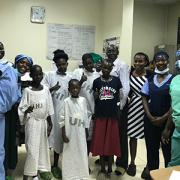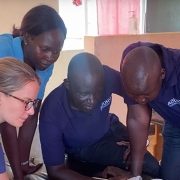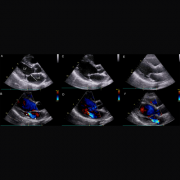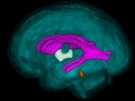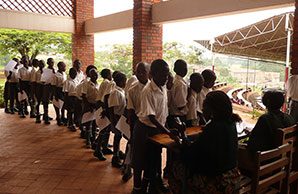
What’s Known
Echocardiograms use the echoes of sound waves to create “movies” of the beating heart, its valves, and other structures. While rheumatic heart disease (RHD) was prevalent in the United States as late as the 1900s, improved housing conditions and the availability of powerful medicines like antibiotics and penicillin have lowered its incidence to 0.04 to 0.06 cases per 1,000 U.S. children. In regions where streptococcal infections flourish, RHD remains a scourge. Using echocardiographic screening to identify latent RHD— which is apparent on echocardiography before the child has symptoms that can be spotted by clinicians—has the potential to reduce the disease’s global burden.
What’s New
Optimal implementation must account for whom to target, when, in which settings, and how often to screen. The team led by Children’s National Health System researchers and clinicians conducted the first family screening study in Northern Uganda to assess the utility of echocardiographic screening of first-degree relatives of children with latent RHD. They used existing school-based screening data to identify potential participants and invited all first-degree relatives older than 5 years for echocardiography screening. The study recruited 60 RHD-positive schoolchildren and matched them with 67 RHD-negative kids of similar age and gender. Some 1,122 family members were then screened. Children with any RHD were 4.5 times as likely to have a sibling with definite RHD, a risk that increased to 5.6 times if researchers looked solely at index cases with definite RHD. The team, led by Andrea Beaton, MD, a cardiologist at Children’s National, also found that mothers had a 9.3 percent rate of latent RHD—a high rate that was independent of whether their child was RHD-positive.
Questions for Future Research
Q: Many children living in RHD-endemic areas, exposed to the same environmental conditions as RHD-positive kids, are able to fend off disease. Are protective genes to credit for their resilience?
Q: What are the best approaches to train nurses and community workers in how to use lower-cost, handheld echocardiograms to facilitate large-scale screening in countries where healthcare resources are constrained?
Source: “Targeted Echocardiographic Screening for Latent Rheumatic Heart Disease in Northern Uganda: Evaluating Familial Risk Following Identification of an Index Case.” T. Aliku, C. Sable, A. Scheel, A. Tompsett, P. Lwabi, E. Okello, R. McCarter, M. Summar, and A. Beaton. Published online by PLoS June 13, 2016.






